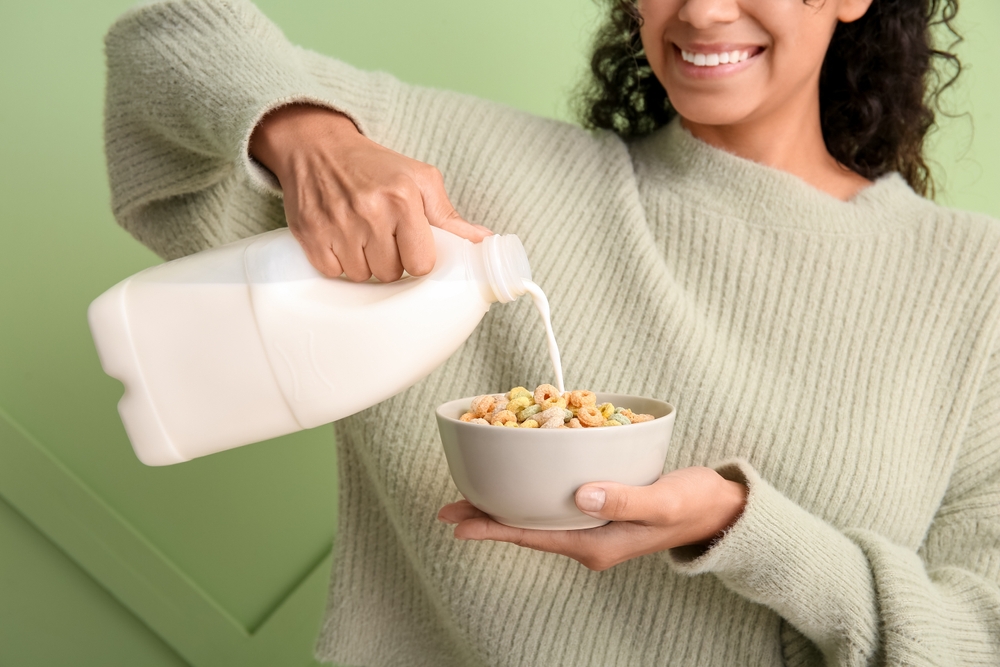The California Department of Public Health (CDPH) has recently issued a warning after detecting the H5N1 avian virus, commonly known as bird flu, in raw milk products sold in the state. As a precautionary measure, Raw Farm, the dairy responsible, has initiated a voluntary recall of its raw milk. This discovery underscores the risks associated with raw milk consumption, sparking a conversation about its safety.
What Is raw milk?
Raw milk is unpasteurized milk sourced directly from cows, sheep, or goats. Unlike pasteurized milk, it does not undergo a heat treatment process to kill harmful bacteria. This practice, known as pasteurization, has been widely adopted since the 1920s to reduce the risk of foodborne illnesses. Despite these safety measures, raw milk has gained a dedicated following among certain consumers who believe it offers unique health benefits.
The debate over raw milk: benefits vs. risks
While advocates of raw milk claim it provides superior flavor, more nutrients, and beneficial bacteria, health experts remain skeptical:
- Proponents argue that raw milk contains enzymes that can aid in digestion, along with natural probiotics that may promote gut health. They also claim that pasteurization diminishes the taste and destroys valuable nutrients.
- Health Experts, including the FDA and CDC, maintain that the nutritional differences between raw and pasteurized milk are minimal. Most enzymes cited as beneficial in raw milk are broken down during digestion, rendering them ineffective. Registered dietitian Scott Keatley and public health expert Janet Buffer agree that the risks of raw milk far outweigh any supposed benefits.
The real risks of raw milk
The primary concern with raw milk consumption is its potential to harbor harmful pathogens. According to Dr. Thomas Russo, a professor and chief of infectious disease at the University at Buffalo, raw milk can contain:
- Campylobacter
- Cryptosporidium
- E. coli
- Listeria
- Brucella
- Salmonella
These bacteria can cause serious foodborne illnesses, leading to symptoms like diarrhea, stomach cramps, and vomiting. In severe cases, infections may result in long-term health complications, organ damage, or death. The nutrient-rich environment of raw milk makes it particularly susceptible to bacterial growth.
The recent detection of the avian virus H5N1 in raw milk products adds another layer of concern. Dr. Russo warns that consuming raw milk under these circumstances could facilitate the spread of avian influenza, potentially sparking new health issues.
Common myths about raw milk
- Myth: Raw milk is more nutritious than pasteurized milk.
Fact: Research has shown no significant nutritional advantage in consuming raw milk over pasteurized milk. The vitamins, minerals, and nutrients in milk remain largely intact after pasteurization. - Myth: Raw milk contains beneficial bacteria that support gut health.
Fact: While raw milk does contain bacteria, many of these can be harmful. The “good” bacteria are not well-defined, and the risks posed by potential pathogens far exceed any minor probiotic benefits. - Myth: Raw milk is safe if it comes from a clean farm.
Fact: Even under the best conditions, raw milk can still contain dangerous bacteria. Testing for all pathogens is challenging, and even healthy animals can carry microbes that pose risks to humans.
Is raw milk ever safe?
Health authorities are united in their stance: raw milk is not considered safe to drink. Populations particularly vulnerable to foodborne illnesses—such as young children, pregnant individuals, the elderly, and those with weakened immune systems—are at the highest risk when consuming raw milk. While raw milk advocates may claim their product is clean and natural, the lack of pasteurization leaves the door open for dangerous infections.
Safety first: Why pasteurization matters
Pasteurization has been a public health cornerstone for over a century, significantly reducing the incidence of milk-borne illnesses. By heating milk to kill harmful bacteria, this process ensures that consumers can enjoy dairy products without worrying about dangerous pathogens. The benefits of pasteurization are well-documented, making it the safest choice for milk consumption.
Conclusion: Raw milk risks outweigh the rewards
The debate around raw milk continues, fueled by cultural preferences, personal beliefs, and a desire for “natural” food products. However, the scientific consensus is clear: raw milk poses significant health risks without offering proven nutritional advantages over pasteurized alternatives. The recent detection of bird flu in raw milk only amplifies these concerns, reinforcing the need for caution. Choosing pasteurized milk is a simple step toward protecting your health and the health of those around you.
For more information on food safety and the risks associated with raw milk, visit the CDC’s official website.














